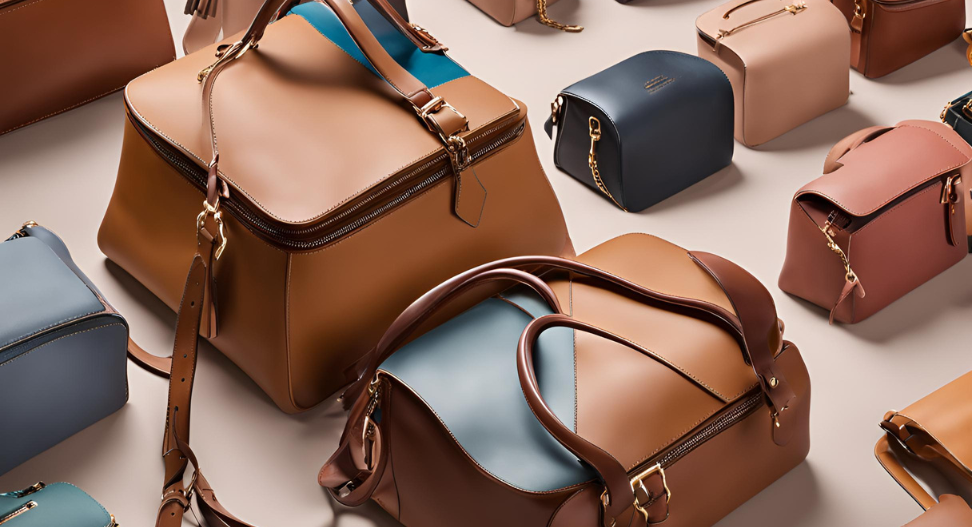The Art of Bag Craftsmanship: From Design to Production
In the world of fashion, bags are more than just accessories; they are an essential part of a person’s style, an expression of individuality, and a testament to craftsmanship. Behind every beautifully crafted bag lies an intricate process of design, selection of materials, and skilled craftsmanship. The art of bag-making is not only about creating a functional item to carry your essentials but also about weaving together creativity, culture, and precision to produce a piece of art.
In this article, we will explore the journey of bag craftsmanship, from the initial design concept to the final production stages. We will take you through each step involved in making a bag, showcasing the intricate details that elevate an ordinary bag to a high-quality, luxury product.
1. The Design Process: Concept to Creation
The creation of a bag begins with the design process. It all starts with a spark of creativity and a clear understanding of the intended purpose and target audience. Designers are inspired by various sources, such as fashion trends, cultural influences, historical references, and even personal experiences.
Research and Inspiration
The first step in the design process is research. Designers immerse themselves in current fashion trends, market needs, and the preferences of their target audience. Inspiration can come from a variety of places—nature, architecture, art, or even social movements. Designers must stay attuned to both classic styles and emerging trends to create bags that resonate with consumers.
Sketching and Prototyping
Once the designer has a clear vision, they begin sketching the design. This step is critical as it helps translate ideas onto paper and serves as a blueprint for the final product. The sketches focus on the bag’s overall shape, size, compartments, and functionality. The designer also considers the aesthetics, such as the style of stitching, handles, and closures.
After finalizing the design, a prototype is created. The prototype is a sample bag made from inexpensive materials to test the design, fit, and function. The designer may make adjustments based on feedback, ensuring the bag’s practicality and visual appeal align with the original concept.
2. Material Selection: Quality and Durability
The choice of materials is one of the most crucial elements in bag craftsmanship. A bag’s durability, look, and feel depend largely on the materials used in its production. High-quality bags are made from premium materials that ensure longevity, while also providing comfort and elegance.
Leather: The Timeless Choice
Leather is one of the most popular materials used in luxury bags. It is durable, flexible, and ages beautifully over time, gaining a patina that enhances its appeal. Leather bags are often chosen for their ability to hold their shape and maintain their structure, while also providing a luxurious feel. The process of selecting leather is meticulous, as the material must be free of imperfections and suitable for the design.
Different types of leather are used depending on the desired finish and functionality. Full-grain leather is the highest quality, offering natural textures and strength. Top-grain leather is slightly more processed but still offers excellent durability and a smooth finish. Other types of leather, such as suede or patent leather, may be chosen for specific styles.
Fabric and Textiles
While leather remains a classic material, bags are also made from various fabrics and textiles. Cotton, linen, and canvas are common choices for more casual or eco-friendly bags. These materials are often lighter than leather, making them ideal for everyday use. In addition to cotton, more high-end bags may incorporate silk, velvet, or even specialty fabrics like tweed for added luxury.
The choice of fabric also influences the bag’s design, texture, and overall aesthetic. For example, a velvet bag might be used for evening events, while a durable canvas bag could be perfect for a casual day out.
Hardware: Adding Functionality and Style
The hardware of a bag, including zippers, clasps, buckles, and studs, is another important consideration in the design process. These elements not only serve a functional purpose but also contribute to the bag’s overall style. High-quality hardware is made from materials like brass, stainless steel, or gold plating, ensuring longevity and durability.
Designers must carefully select hardware that complements the bag’s overall design and color palette. The wrong hardware can detract from the bag’s aesthetic, while well-chosen hardware can enhance the bag’s appeal and make it stand out.
3. Pattern Making: Precision and Detail
Once the materials are selected, the next step in bag craftsmanship is pattern making. A pattern is a template that serves as the foundation for cutting the bag’s components. Creating a pattern requires great precision, as it ensures that all the pieces fit together perfectly during assembly.
Measuring and Cutting
Pattern makers use the designer’s sketches to create accurate templates for the bag’s components. The components may include the body, lining, handles, straps, and pockets. Once the patterns are created, the materials are carefully measured and cut. For leather bags, the leather is often cut by hand to ensure that each piece follows the grain and texture of the leather.
For fabric bags, the process is similar, but fabric is often cut with the help of machines to ensure uniformity and efficiency. Each component must be cut with precision to avoid errors during the assembly stage.
4. Assembly: Bringing the Design to Life
The assembly stage is where all the pieces of the bag come together. This is where the craftsmanship truly shines, as skilled artisans carefully stitch, glue, and attach various components to form the final product.
Sewing and Stitching
The stitching is a critical aspect of bag craftsmanship, as it not only ensures the durability of the bag but also contributes to its visual appeal. High-quality bags often feature hand-stitched seams, which add a level of detail and precision that machine stitching cannot replicate. Hand stitching is especially important in luxury bags, where attention to detail is paramount.
The stitching must be strong enough to hold the bag’s components together but also neat and consistent to maintain the bag’s aesthetic. For leather bags, specialized needles and threads are used to prevent damage to the material while ensuring the seams are secure.
Adding Hardware and Finishing Touches
After the body of the bag is assembled, the hardware is added. This may include attaching the handles, zippers, clasps, and any other decorative or functional elements. Each piece of hardware must be carefully installed to ensure it functions correctly and enhances the overall design.
Finally, any finishing touches are added. This may include applying a protective coating to leather, ironing the bag to remove wrinkles, or adding branding details like labels or logos. The bag is carefully inspected for quality before it moves on to the next stage.
5. Quality Control: Ensuring Perfection
Before a bag is ready for sale, it undergoes a rigorous quality control process. Quality control ensures that each bag meets the company’s high standards and that no defects are present.
Inspection
Each bag is inspected for imperfections in the materials, stitching, hardware, and overall construction. This includes checking for uneven stitching, damaged hardware, or any other issues that may compromise the bag’s quality. Bags that pass the inspection are cleaned and prepared for packaging.
Testing Durability
For certain types of bags, especially those made from leather or high-end materials, durability testing may be conducted. This can include testing the bag’s resistance to wear and tear, checking the strength of the straps, or evaluating how well the leather holds up over time.
6. Packaging and Distribution: Ready for the Market
Once the bag has passed the quality control stage, it is ready for packaging and distribution. Packaging plays a significant role in the presentation of the bag. Luxury bags are often packaged in branded dust bags or boxes, adding an extra layer of elegance to the product.
Bags are then shipped to retailers, wholesalers, or directly to customers. Some brands also offer custom packaging for high-end clients, providing a personalized experience that elevates the perceived value of the product.
7. The Craftsmanship Behind Every Bag
The art of bag craftsmanship is a meticulous and detailed process that requires creativity, precision, and skill. From the initial design to the final production, every step plays a crucial role in ensuring that the bag is not only functional but also a work of art. The combination of high-quality materials, skilled artisans, and thoughtful design ensures that every bag created is a timeless accessory that can be cherished for years to come.
As consumers, we may not always see the intricate steps involved in creating a bag, but understanding the craftsmanship behind these products can deepen our appreciation for the time, effort, and artistry that goes into each piece. Whether you’re purchasing a luxury leather handbag or a casual canvas tote, you’re investing in a product that has been carefully crafted to perfection.
By recognizing the craftsmanship behind every bag, we can better appreciate the value of quality, the importance of skilled artisans, and the enduring beauty of a well-made accessory. Whether for function, style, or both, bags continue to play an integral role in our lives, serving as both a practical necessity and a reflection of our personal style.









